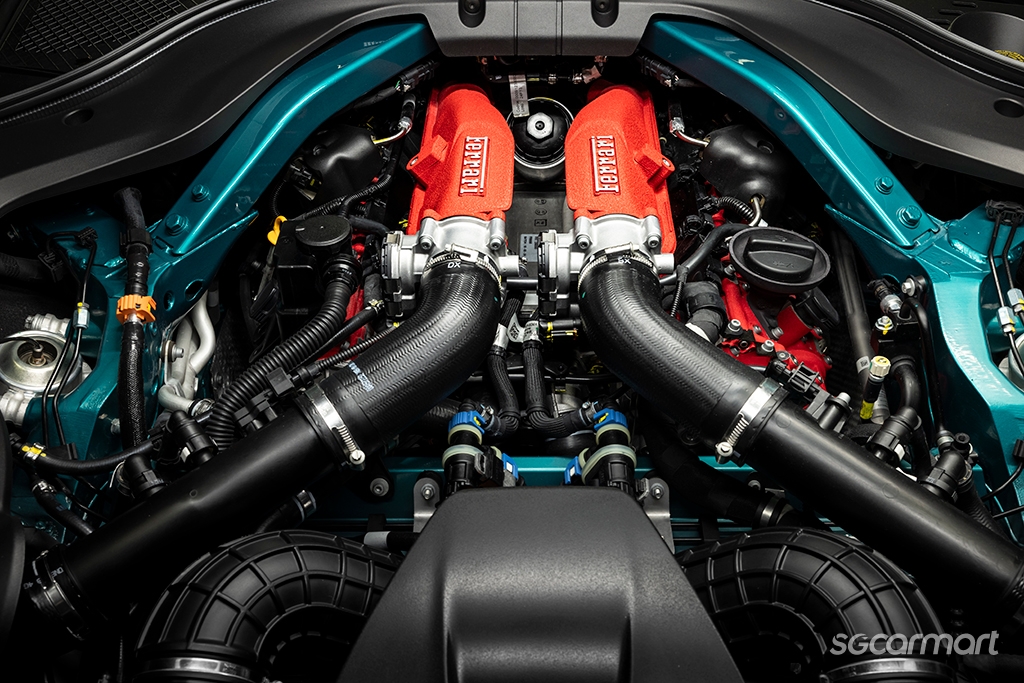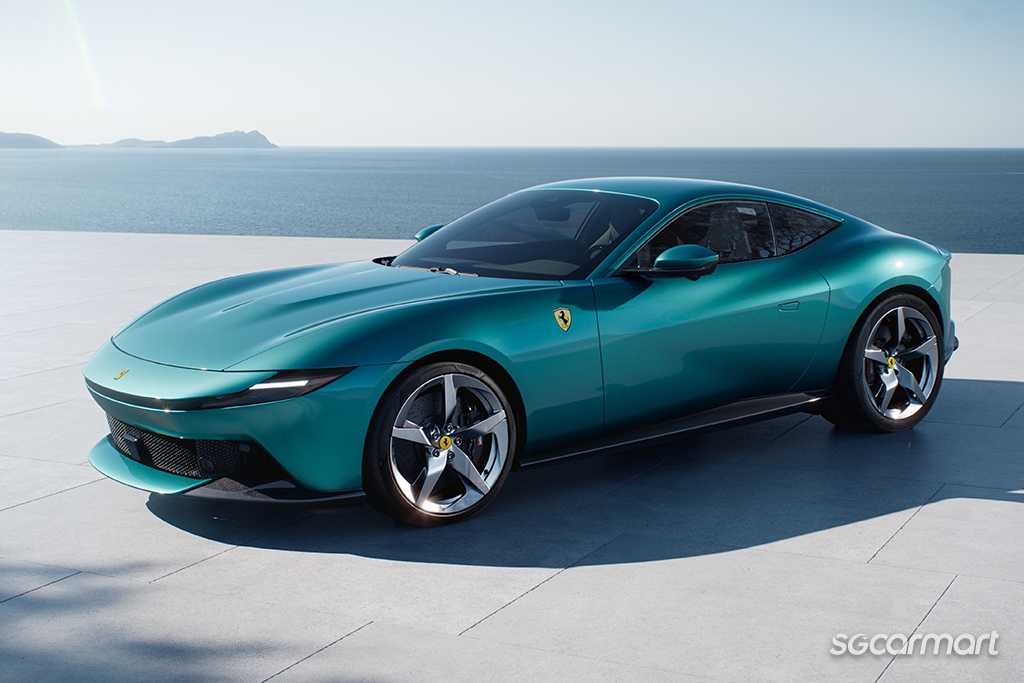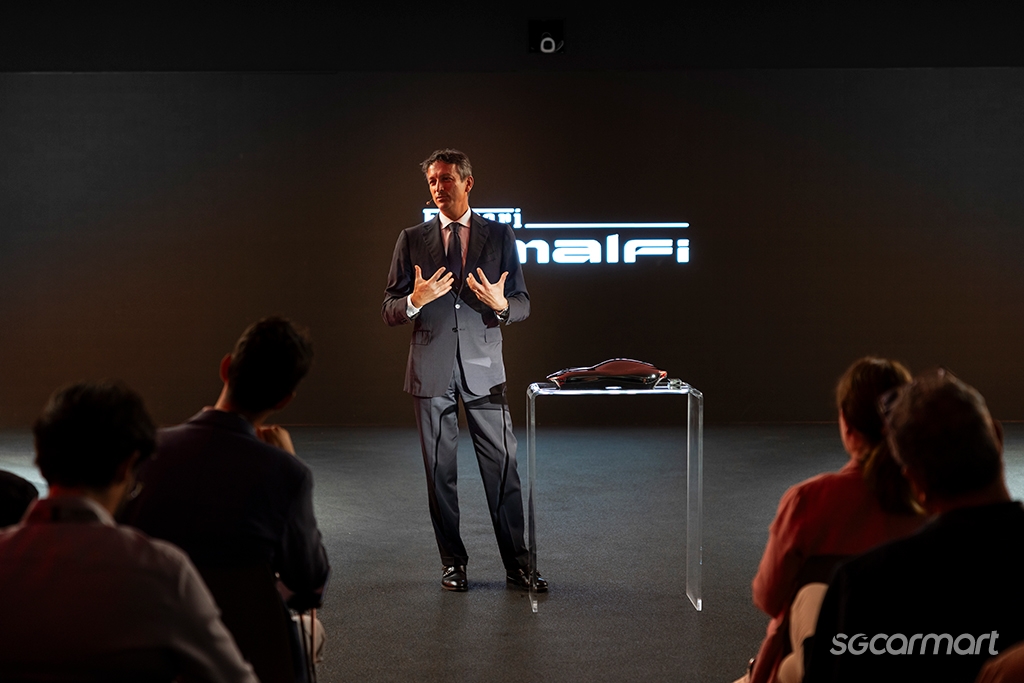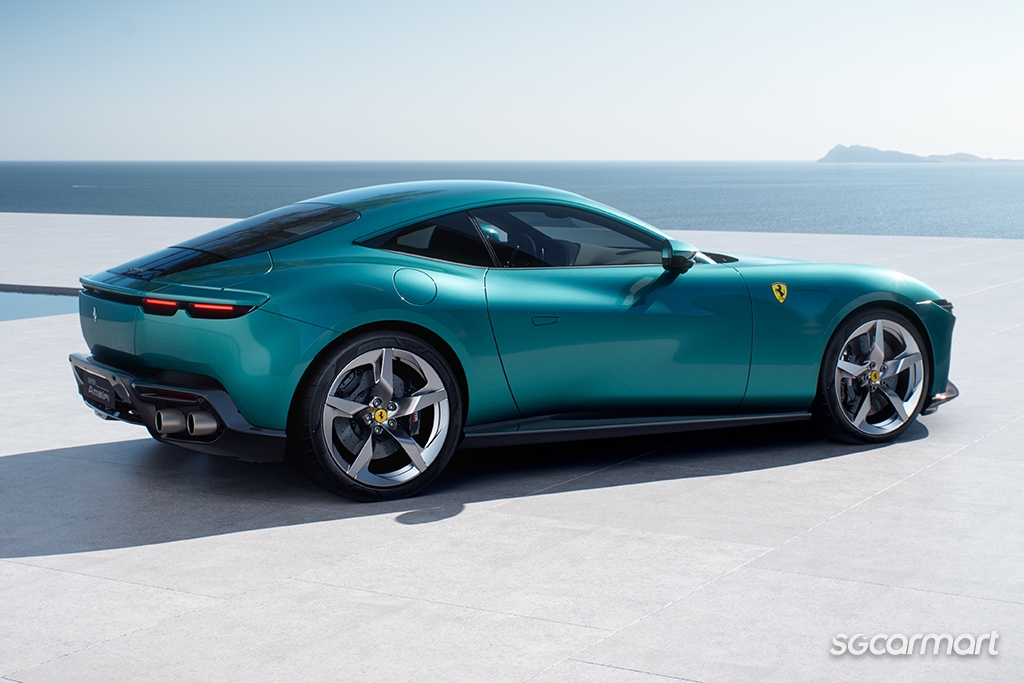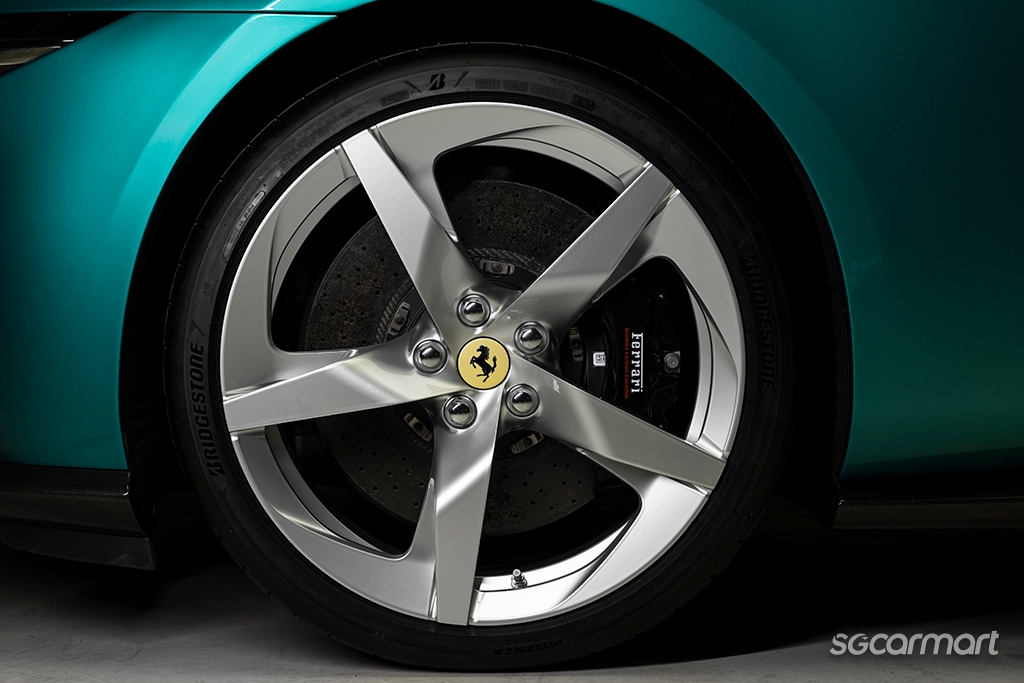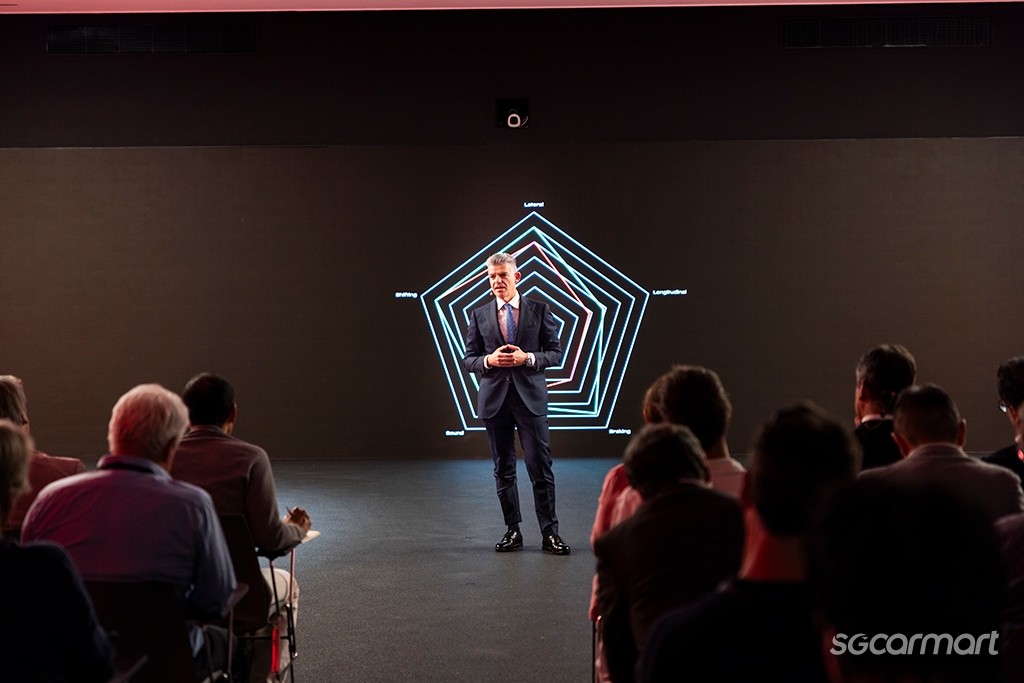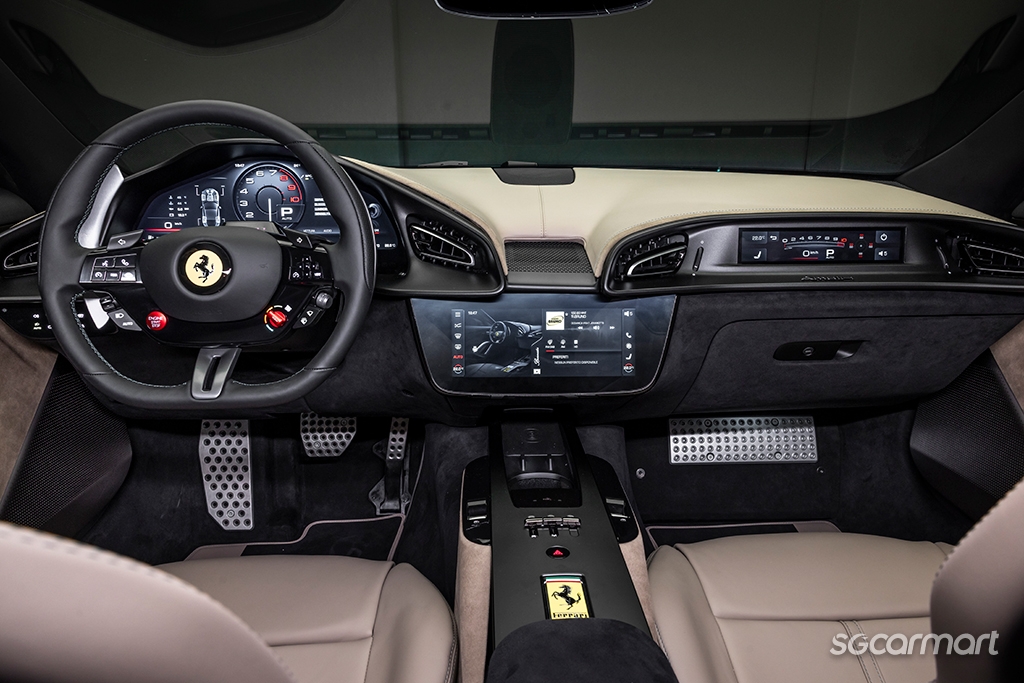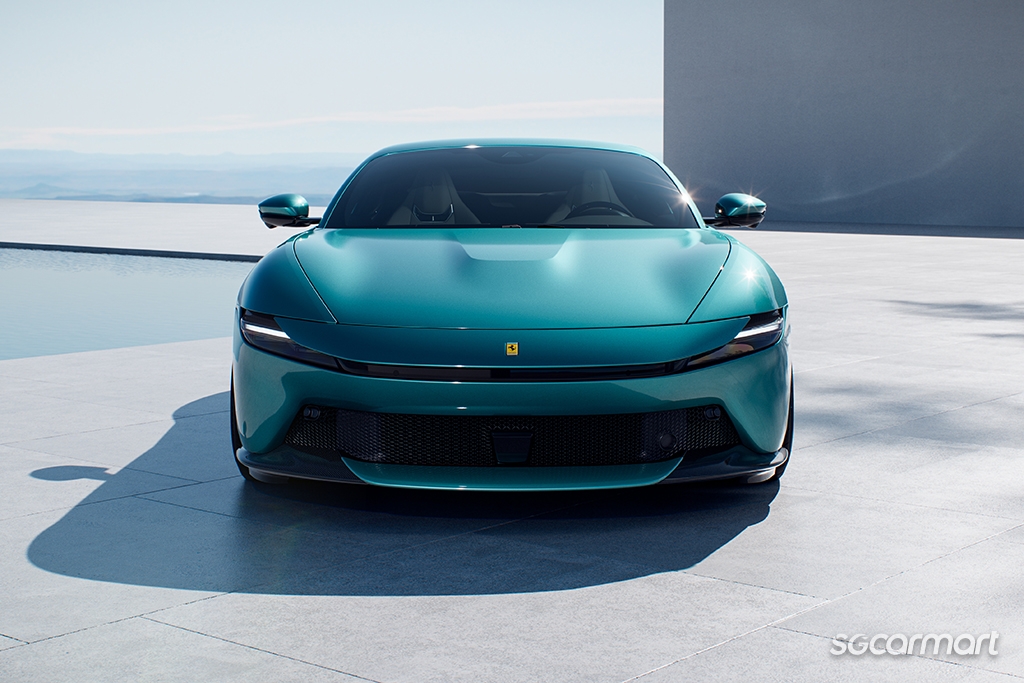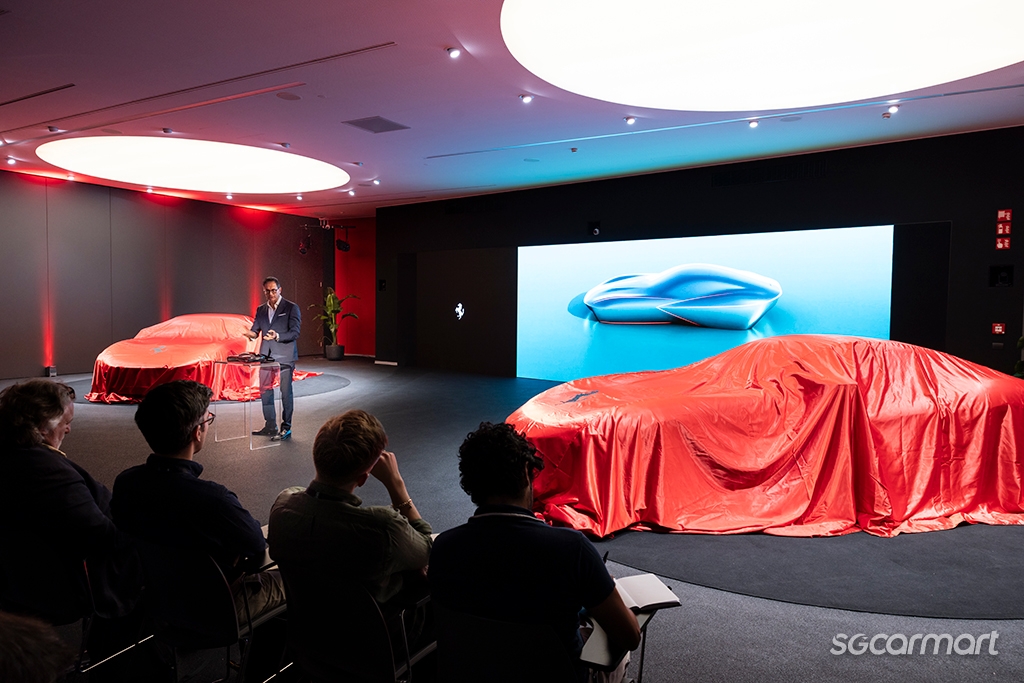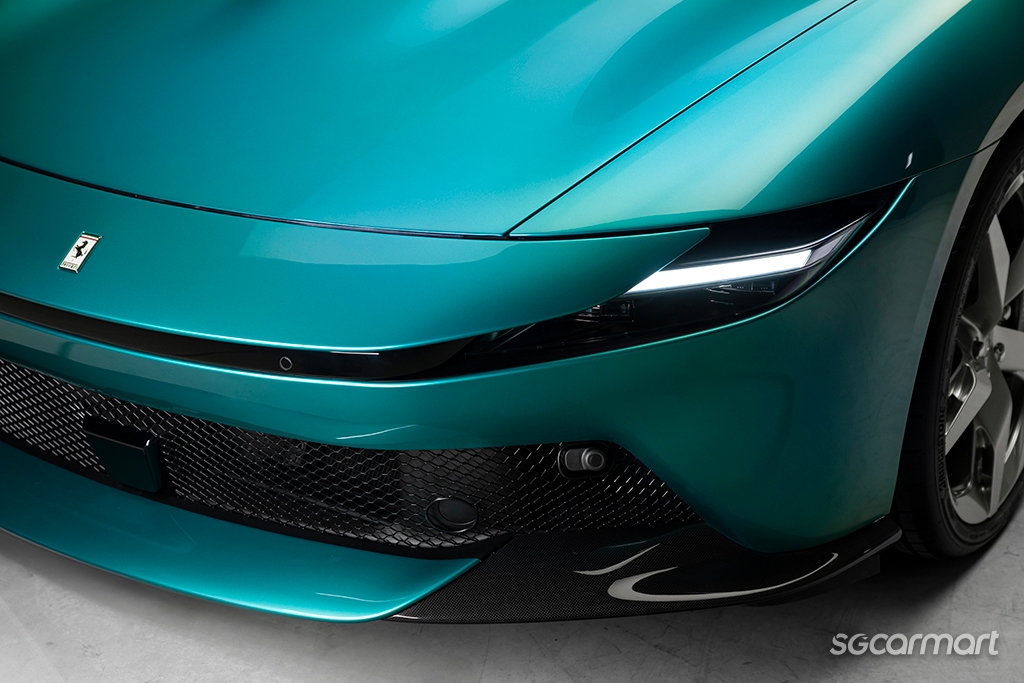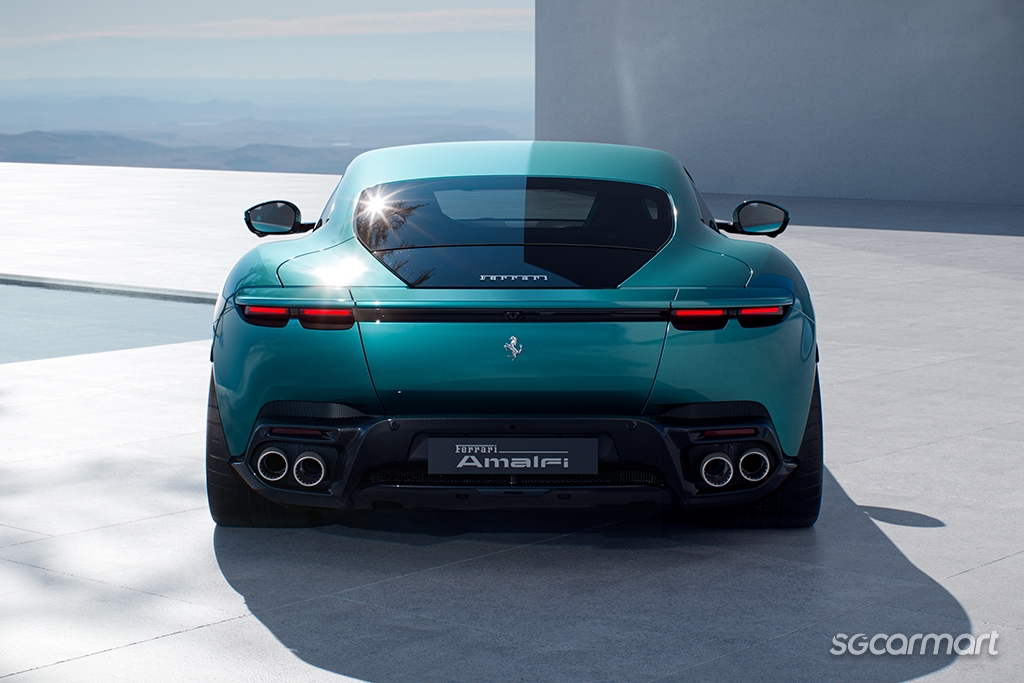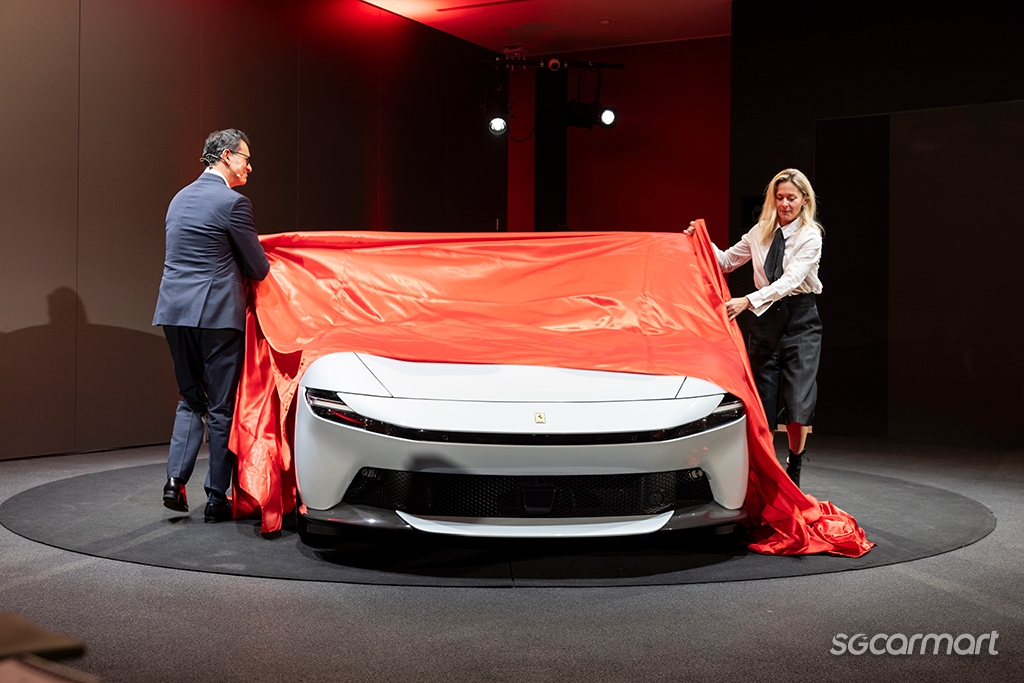7 things you should know about the Ferrari Amalfi
08 Jul 2025|711 views
Ferrari has finally pulled the covers off the all-new Amalfi: A gorgeous and sleek-looking front-mid-engined coupe set to succeed the Roma.
Named after the picturesque Amalfi Coast in Southern Italy, the Amalfi stays true to the spirit of the Prancing Horse with a number of characteristics that feel older-school Ferrari (more on that in a bit). Simultaneously, however, the coupe brings crucial upgrades in performance that continue to burnish its appeal as a sensual supercar with two souls: Refined and approachable, yet steeped in sharpness when prodded by keener drivers.
With the press conference at which the car was unveiled still fresh in our minds, here are a few key quotes about the Amalfi that better illuminate its position within Ferrari's modern lineup.
1) No hybrid assistance
Between the likes of the 296 GTB and SF90 Stradale - and even a confirmed fully-electric sports car for 2026 - Ferrari has made it clear that it isn't shying away from electric power.
Still, that's not to say that it's seen fit for all its models to get hybrid assistance. The Amalfi is one such example: Mounted underneath its sculpted bonnet is a twin-turbo V8 that is solely responsible for propelling the coupe. It's mated to an eight-speed DCT to send a whopping total of 631bhp and 760Nm of torque to the rear wheels, with the redline now elevated to 7,600rpm. Those are heady figures for a powertrain with no electrification whatsoever.
While reaffirming the brand's decision to pursue hybrid tech today for its highest-performing cars, Gianmaria Fulgenzi, Ferrari's Chief Product Development Officer also noted: "Product-wise, this is a different car. The V8, in terms of maximum performance, horsepower, technology simplification, maintenance requirements, and usability for every kind of customer (also for first-time customers), is the correct powertrain to give the car its correct heart and soul."
2) Not likely to be the last pure V8 car too
Still, given that pure combustion power is becoming a rare commodity even in the world of supercars - and given Ferrari's warm embrace of the V6 hybrid of late - you wouldn’t be wrong to wonder if the Amalfi potentially marks the last V8-powered car to come out of Maranello.
Ferrari, however, appears to have good news for its fans and customers: It's committed to investing in "every single technology".
"Five years ago, when we announced we were investing in a full-electric car, we also said we would continue investing in all available technologies: V6, V8, V12, combustion engines, hybrids, and in the future, electric," Enrico Galliera, Ferrari's Chief Marketing and Commercial Officer reminded us.
Continuing, he said, "We don't believe this is something a company should impose on the market. It's the client who should choose what they prefer, within the framework of regulation. That statement is still true." Here's hoping those with pockets deep enough to shop from Maranello keep voting for the V8 and V12 with their dollars.
3) It's still intended to be the first Ferrari for many potential customers
Speaking of folks with deep pockets, the Roma always had a special mission: To lure in one-percenters around the world with cash to splash, but who perhaps found the likes of the SF90 Stradale (and thus the Ferrari brand as a whole) too intimidating. "Daily driver" is perhaps not what many think of when they think Ferrari, but the curvaceous Roma was meant to embody that exactly with GT-esque comfort and refinement.
Once it was done arresting a customer's attention with its good looks, however, the Roma was meant to show its other side: By bringing breathtaking handling and speed to the fore. (Ferrari has since referred to this as a 'dual-soul' philosophy.) Both sides of the coin have been given added emphasis now on the Amalfi.
"We wanted to create a car for new-to-Ferrari clients, perhaps experiencing a Ferrari for the first time. It had to be comparatively easy to drive and not too intimidating, even with 631bhp", Fulgenzi also explained at the press conference. "This car is designed to be accessible to everyone, while still offering more experienced drivers the ability to enjoy its full potential, whether on mountain roads or highways."
4) But its upgrades this time are not just about straight-line performance
Presenting a pentagonal radar chart to the journalists at the media press conference, Fulgenzi also highlighted that the Amalfi now offers upgrades in terms of lateral performance (handling), longitudinal performance (straight-line speed) and sound over the Roma. But it was clear this time where the biggest leap was made: In terms of stopping power.
Equipped now with a brake-by-wire system and Ferrari's latest-generation ABS Evo dynamic control software, the Amalfi is at once less intimidating, yet more focused than before. "These systems, originally developed for our most performance-focused models, now ensure that this car is both gentle at low speeds and razor-sharp when pushed," Fulgenzi shared.
Ferrari has the figures to prove too. The Amalfi needs just 30m to decelerate from 100-0km/h, and just 119.5m from 200-0km/h. That's a 10.5m-reduction for the latter, or an 8.9% improvement. Fulgenzi was, however, quick to add that the upgrades were not targeted solely at "absolute performance, but also repeatability".
"The driver gets consistent braking feel and distance in all conditions, making the car more predictable and easier to drive whether you're a first-time user or a seasoned driver," he explained. This is exactly the sort of magic you'd expect a car with two souls to be able to work.
5) The return of physical controls
Yes - after a number of models carrying cool-looking but ergonomically-questionable touch buttons on their steering wheels (including the Roma, the Purosangue, even the 12Cilindri), the Amalfi sees Ferrari re-balancing its digital-tactile spread within the cabin. "It is feedback that we received very loudly from our clients, and we like to listen," Enrico Galliera, Ferrari's Chief Marketing & Commercial Officer, told journalists.
A steering wheel full of clickable buttons should surely bring delight to keener drivers: There's a 'kill switch' for the ADAS, for instance, so turning down all the beeps and chimes is now a simpler affair. But most importantly, Ferrari's iconic bright-red aluminium button has returned, and once more, you can depress it fully to bring that twin-turbo V8 roaring life. Hurrah!
6) All of its body panels, except for the greenhouse area, are new
It's a good thing the Amalfi shares largely the same silhouette as the Roma, since it means the inheritance of what have been some of the most elegant proportions we've seen in the supercar world in recent memory.
Don't mistake the similarity for a simple re-badge, though: All of the Amalfi's body panels - with the exception of the greenhouse area - are brand new. When asked if the coupe marks the dawn of a new design chapter for Ferrari, Flavio Manzoni, Ferrari's Chief Design Officer agreed.
Flavio Manzoni, Chief Design Officer of Ferrari, believes the Amalfi's new design is consistent with Ferrari's evolving identity
"It was... very important for us to give a new identity to this car - one that is consistent with the identity of the new Ferrari we are gradually introducing into the range", he explained, pointing to the car's less-anthropomorphic front end as an example of "a shift in design codes".
"Of course, without repeating the same elements... there should be a certain family feeling across the range," he added. You'd be inclined to agree too, given the other prominent machines of late that Manzoni has left his mark on, including the 12Cilindri and F80.
7) And it's resolutely not a Roma M
If you were keeping tabs on chatter pulsing through the motoring world prior to the Amalfi's splashy reveal, you might have encountered a few headlines back in late-May or early-June postulating that the Italian marque was readying itself to unveil the Roma M.
When the satin sheets were pulled off and the Amalfi was revealed in full, then, the question was naturally also posed to the team: Why the new name?
Using the 296 Speciale as a reference point, Galliera explained: "The 296 Speciale does not have a different concept; it is designed to improve performance, giving up some of the onboard comfort for the sake of performance. So it's not a completely new model - it is like an enhanced concept."
The Amalfi, however, had a completely different starting point. "Every time we launch a new product on the market, we start with the concept, the positioning, and then we decide what the name is," Galliera continued.
"We believe - we hope to be right - that the work our design and technical teams did on this new car deserves a new name, because it's creating a new positioning in the segment. That's the reason why we decided to change the name: To give a soul and a presence to the new atmosphere [around it]."
Here are a few other articles that may interest you!
The pre-owned journey into Ferrari ownership
Universo Ferrari: A little slice of Maranello
The new Ferrari F80 and its place in the hypercar fraternity
Ferrari has finally pulled the covers off the all-new Amalfi: A gorgeous and sleek-looking front-mid-engined coupe set to succeed the Roma.
Named after the picturesque Amalfi Coast in Southern Italy, the Amalfi stays true to the spirit of the Prancing Horse with a number of characteristics that feel older-school Ferrari (more on that in a bit). Simultaneously, however, the coupe brings crucial upgrades in performance that continue to burnish its appeal as a sensual supercar with two souls: Refined and approachable, yet steeped in sharpness when prodded by keener drivers.
With the press conference at which the car was unveiled still fresh in our minds, here are a few key quotes about the Amalfi that better illuminate its position within Ferrari's modern lineup.
1) No hybrid assistance
Between the likes of the 296 GTB and SF90 Stradale - and even a confirmed fully-electric sports car for 2026 - Ferrari has made it clear that it isn't shying away from electric power.
Still, that's not to say that it's seen fit for all its models to get hybrid assistance. The Amalfi is one such example: Mounted underneath its sculpted bonnet is a twin-turbo V8 that is solely responsible for propelling the coupe. It's mated to an eight-speed DCT to send a whopping total of 631bhp and 760Nm of torque to the rear wheels, with the redline now elevated to 7,600rpm. Those are heady figures for a powertrain with no electrification whatsoever.
While reaffirming the brand's decision to pursue hybrid tech today for its highest-performing cars, Gianmaria Fulgenzi, Ferrari's Chief Product Development Officer also noted: "Product-wise, this is a different car. The V8, in terms of maximum performance, horsepower, technology simplification, maintenance requirements, and usability for every kind of customer (also for first-time customers), is the correct powertrain to give the car its correct heart and soul."
2) Not likely to be the last pure V8 car too
Still, given that pure combustion power is becoming a rare commodity even in the world of supercars - and given Ferrari's warm embrace of the V6 hybrid of late - you wouldn’t be wrong to wonder if the Amalfi potentially marks the last V8-powered car to come out of Maranello.
Ferrari, however, appears to have good news for its fans and customers: It's committed to investing in "every single technology".
"Five years ago, when we announced we were investing in a full-electric car, we also said we would continue investing in all available technologies: V6, V8, V12, combustion engines, hybrids, and in the future, electric," Enrico Galliera, Ferrari's Chief Marketing and Commercial Officer reminded us.
Continuing, he said, "We don't believe this is something a company should impose on the market. It's the client who should choose what they prefer, within the framework of regulation. That statement is still true." Here's hoping those with pockets deep enough to shop from Maranello keep voting for the V8 and V12 with their dollars.
3) It's still intended to be the first Ferrari for many potential customers
Speaking of folks with deep pockets, the Roma always had a special mission: To lure in one-percenters around the world with cash to splash, but who perhaps found the likes of the SF90 Stradale (and thus the Ferrari brand as a whole) too intimidating. "Daily driver" is perhaps not what many think of when they think Ferrari, but the curvaceous Roma was meant to embody that exactly with GT-esque comfort and refinement.
Once it was done arresting a customer's attention with its good looks, however, the Roma was meant to show its other side: By bringing breathtaking handling and speed to the fore. (Ferrari has since referred to this as a 'dual-soul' philosophy.) Both sides of the coin have been given added emphasis now on the Amalfi.
"We wanted to create a car for new-to-Ferrari clients, perhaps experiencing a Ferrari for the first time. It had to be comparatively easy to drive and not too intimidating, even with 631bhp", Fulgenzi also explained at the press conference. "This car is designed to be accessible to everyone, while still offering more experienced drivers the ability to enjoy its full potential, whether on mountain roads or highways."
4) But its upgrades this time are not just about straight-line performance
Presenting a pentagonal radar chart to the journalists at the media press conference, Fulgenzi also highlighted that the Amalfi now offers upgrades in terms of lateral performance (handling), longitudinal performance (straight-line speed) and sound over the Roma. But it was clear this time where the biggest leap was made: In terms of stopping power.
Equipped now with a brake-by-wire system and Ferrari's latest-generation ABS Evo dynamic control software, the Amalfi is at once less intimidating, yet more focused than before. "These systems, originally developed for our most performance-focused models, now ensure that this car is both gentle at low speeds and razor-sharp when pushed," Fulgenzi shared.
Ferrari has the figures to prove too. The Amalfi needs just 30m to decelerate from 100-0km/h, and just 119.5m from 200-0km/h. That's a 10.5m-reduction for the latter, or an 8.9% improvement. Fulgenzi was, however, quick to add that the upgrades were not targeted solely at "absolute performance, but also repeatability".
"The driver gets consistent braking feel and distance in all conditions, making the car more predictable and easier to drive whether you're a first-time user or a seasoned driver," he explained. This is exactly the sort of magic you'd expect a car with two souls to be able to work.
5) The return of physical controls
Yes - after a number of models carrying cool-looking but ergonomically-questionable touch buttons on their steering wheels (including the Roma, the Purosangue, even the 12Cilindri), the Amalfi sees Ferrari re-balancing its digital-tactile spread within the cabin. "It is feedback that we received very loudly from our clients, and we like to listen," Enrico Galliera, Ferrari's Chief Marketing & Commercial Officer, told journalists.
A steering wheel full of clickable buttons should surely bring delight to keener drivers: There's a 'kill switch' for the ADAS, for instance, so turning down all the beeps and chimes is now a simpler affair. But most importantly, Ferrari's iconic bright-red aluminium button has returned, and once more, you can depress it fully to bring that twin-turbo V8 roaring life. Hurrah!
6) All of its body panels, except for the greenhouse area, are new
It's a good thing the Amalfi shares largely the same silhouette as the Roma, since it means the inheritance of what have been some of the most elegant proportions we've seen in the supercar world in recent memory.
Don't mistake the similarity for a simple re-badge, though: All of the Amalfi's body panels - with the exception of the greenhouse area - are brand new. When asked if the coupe marks the dawn of a new design chapter for Ferrari, Flavio Manzoni, Ferrari's Chief Design Officer agreed.
Flavio Manzoni, Chief Design Officer of Ferrari, believes the Amalfi's new design is consistent with Ferrari's evolving identity
"It was... very important for us to give a new identity to this car - one that is consistent with the identity of the new Ferrari we are gradually introducing into the range", he explained, pointing to the car's less-anthropomorphic front end as an example of "a shift in design codes".
"Of course, without repeating the same elements... there should be a certain family feeling across the range," he added. You'd be inclined to agree too, given the other prominent machines of late that Manzoni has left his mark on, including the 12Cilindri and F80.
7) And it's resolutely not a Roma M
If you were keeping tabs on chatter pulsing through the motoring world prior to the Amalfi's splashy reveal, you might have encountered a few headlines back in late-May or early-June postulating that the Italian marque was readying itself to unveil the Roma M.
When the satin sheets were pulled off and the Amalfi was revealed in full, then, the question was naturally also posed to the team: Why the new name?
Using the 296 Speciale as a reference point, Galliera explained: "The 296 Speciale does not have a different concept; it is designed to improve performance, giving up some of the onboard comfort for the sake of performance. So it's not a completely new model - it is like an enhanced concept."
The Amalfi, however, had a completely different starting point. "Every time we launch a new product on the market, we start with the concept, the positioning, and then we decide what the name is," Galliera continued.
"We believe - we hope to be right - that the work our design and technical teams did on this new car deserves a new name, because it's creating a new positioning in the segment. That's the reason why we decided to change the name: To give a soul and a presence to the new atmosphere [around it]."
Here are a few other articles that may interest you!
The pre-owned journey into Ferrari ownership
Universo Ferrari: A little slice of Maranello
The new Ferrari F80 and its place in the hypercar fraternity
Thank You For Your Subscription.




















